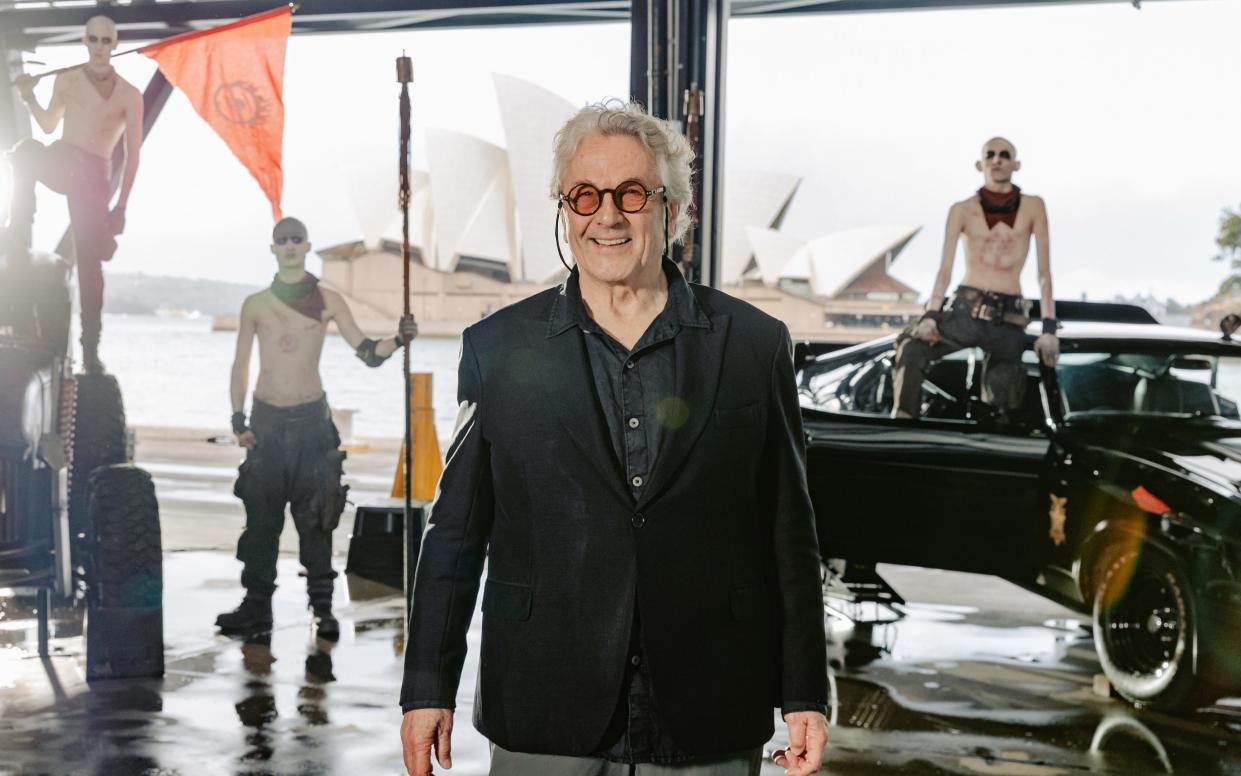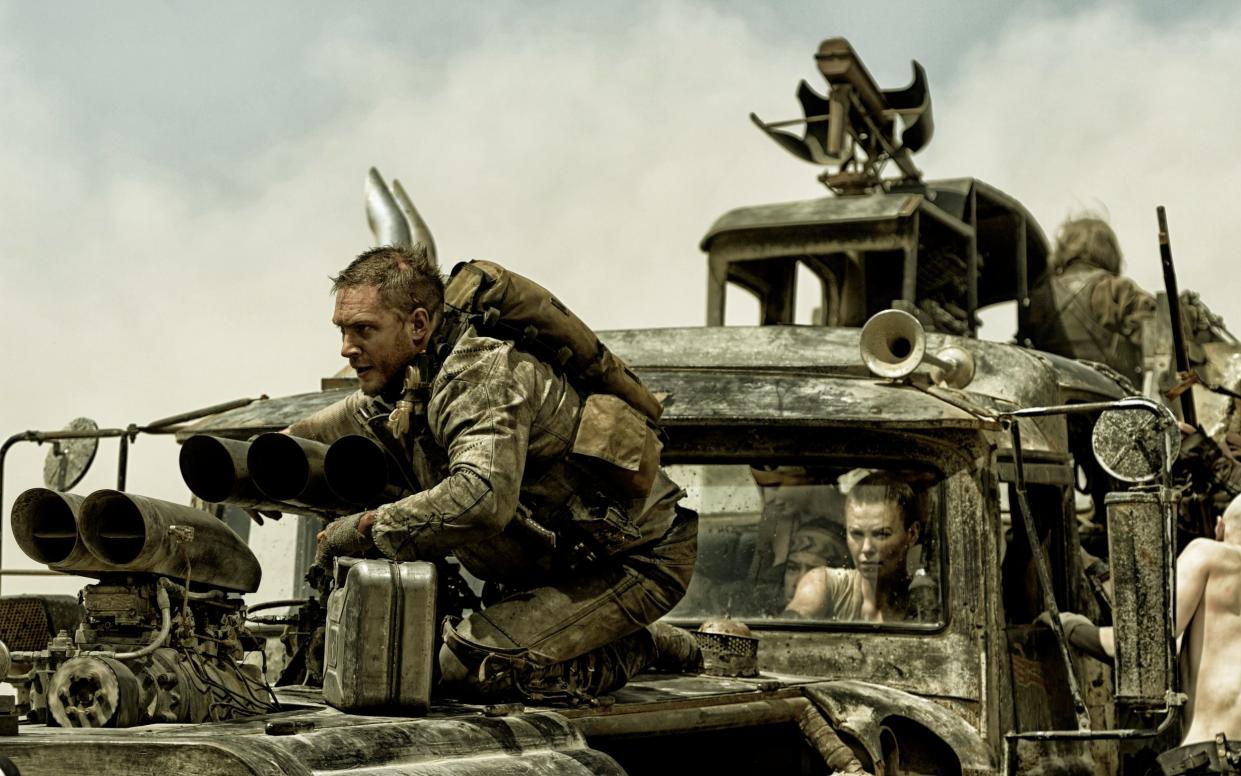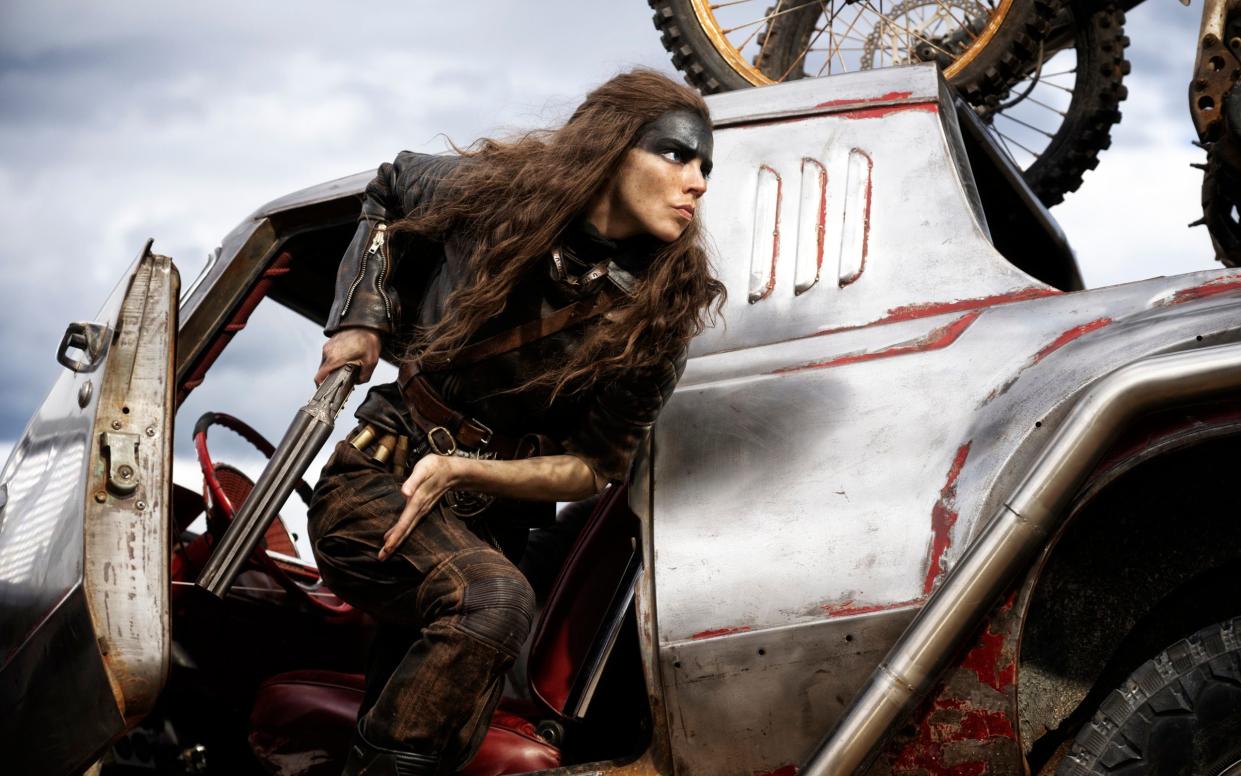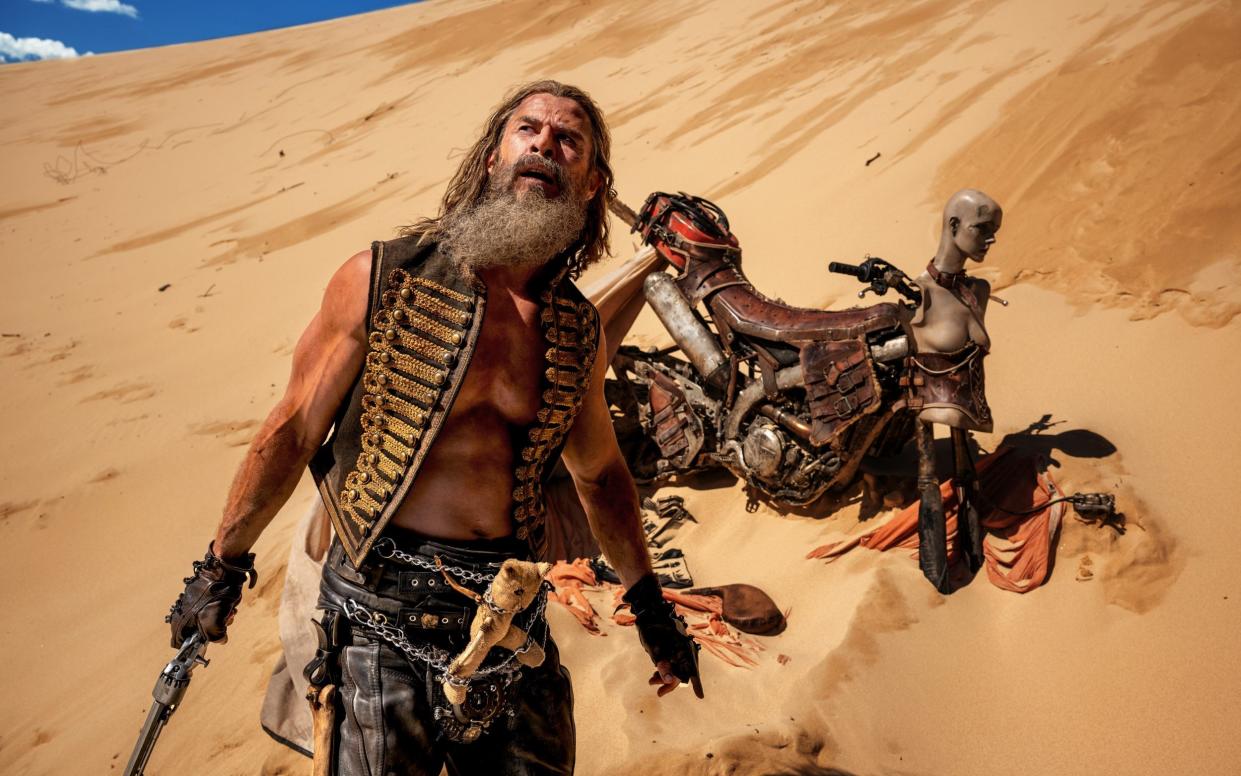‘Tom Hardy had to be coaxed from his trailer’: George Miller on the feud that nearly broke the Mad Max saga

“Hold out your thumb at arm’s length,” says George Miller, while sitting at his desk and doing exactly that. “Now turn it sideways and bring it level with your gaze. What do you notice about your thumbnail? And without allowing your focus to wander, what do you notice about everything else?”
The 79-year-old Australian creator of Mad Max looks like a Roman emperor deciding whether to spare or doom a gladiator, and his smile suggests the choice is not an unamusing one. What he’s actually doing is demonstrating the difference between foveal and peripheral vision: in other words, why we perceive a lot less of the world in pin-sharp detail than we might think.
Not every director spends their time musing on the workings of the human retina; perhaps if they did, there would be more films as good as Miller’s. Around an hour into Furiosa: A Mad Max Saga – a new prequel to 2015’s multi-Oscar-winning Mad Max: Fury Road, and the fifth and most dizzyingly expansive film in the series – the young heroine, played by Anya Taylor-Joy, has her first experience of full-blown road war. While she is thundering across the burnt out Wasteland in an articulated lorry, the convoy is attacked by bandits, who lay siege from flame-propelled parachutes, hang-gliders and kites.
In any other blockbuster, these airborne attackers would have been grafted in digitally – but in Furiosa they’re transparently there, swooping suicidally at the truck, whose crew of chalky-skinned War Boys defend themselves with bomb-tipped spears. “We had to work out how to do it for real,” Miller says, “because the brain is very good at gauging physics. If the movements of those vehicles aren’t totally genuine, your audience is far less likely to buy into anything else.”
The solution? Instead of faking danger, he camouflaged safety. Miller’s crew built a huge scaffolding arch on wheels, which roared along in line with the convoy, with the flying machines dangling from it on manipulable cords. Visual effects artists could later airbrush this structure painlessly from the edges of the frame, safe in the knowledge that the audience’s foveal pits would be trained on the centre, where reality reigned.
True, this meant the sequence took 78 days to shoot in the baking Australian Outback with 200 stunt performers on set, and with each working week yielding less than a minute of footage. But if you were going to strap on a pair of ramshackle wings and dive-bomb a speeding lorry on camera, Miller is the director for whom you’d want to do it. After growing up in rural Queensland, he trained as a doctor in Sydney, and has an immaculate bedside manner – as well as an overall air of erudition, helped by his shock of white hair and the pair of round, horn-rimmed spectacles looped librarianishly on a chain around his neck.
Throughout half a century of filmmaking, Miller has always been hard to pin down. Yes, he’s the Mad Max guy, but he is also the driving force behind the Babe and Happy Feet films, plus a string of curios and, in the form of 1987’s John Updike adaptation, The Witches of Eastwick – a production blighted by interfering producers – a solitary, unhappy brush with Hollywood on the studio machine’s own terms.
He started making films in his 20s “out of curiosity”, though had little time for the avant-garde scene noodling away in Sydney and Melbourne. Instead he was a fan of the “pure cinema” of Buster Keaton, Charlie Chaplin and the other silent comedy greats which, he says, “Hitchcock defined as movies where they don’t have to read the subtitles when they’re screened in Japan”. The problem with dialogue, he explains, is that it tends to slow things down, and film is a medium that’s often best enjoyed at high speed. Now might be a good time to mention that across the entire two-and-a-half hours of Furiosa – which barrels through 15 years of its heroine’s early life, from a childhood abduction to all-out tribal warfare – its lead actress has only around 30 lines of dialogue.
That will doubtless prove a talking point – or rather a not-talking point – when Furiosa screens at Cannes next week. It will be Miller’s fourth visit to the festival after the triumphant 2015 premiere of Fury Road, his spell as jury president the following year, and the 2022 launch of Three Thousand Years of Longing, an offbeat fantasy romance which paired off a garrulous genie played by Idris Elba with Tilda Swinton’s lovelorn academic.
He looks unrattled by the prospect, but then unrattled appears to be his default setting. When I last interviewed Miller in 2015, he couldn’t have been in a sunnier mood, despite having just completed the notoriously gruelling Fury Road shoot in Namibia, and being at loggerheads with the old regime at Warner Bros, who at that point were convinced the film – which would go on to take almost $400 million at the worldwide box office – was a disaster-in-waiting and were quibbling over credits and fees. (This led to a lawsuit, which was settled to Miller’s satisfaction before filming on Furiosa began.)

He was also dealing with two stars, Tom Hardy (playing Max) and Charlize Theron (as Furiosa), who were at one another’s throats. It was later reported that the two had fallen out over Hardy’s persistent lateness: after Theron called him “disrespectful”, Hardy’s response was sufficiently ferocious for the actress to ask for a female producer to be present to mediate at all times.
“They were just two very different performers,” Miller remembers. “Tom has a damage to him but also a brilliance that comes with it, and whatever was going on with him at the time, he had to be coaxed out of his trailer. Whereas Charlize was incredibly disciplined – a dancer by training, which told in the precision of her performance – and always the first one on set.”
He recalls that Theron had initially warned him that she had an aversion to dust – a problem on a film set in the desert – and he had assured her that a supply of cleansing wipes would always be on hand. “But she said, ‘No, I’m telling you because I can use it.’ And then every morning after getting into her costume and make-up, she’d come outside and roll around in the dirt.”
Miller says that things got better as the shoot wore on: “I’m an optimist, so I saw their behaviour as mirroring their characters, where they had to learn to co-operate in order to ensure mutual survival.” Nevertheless, he adds, “There’s no excuse for it, and I think there’s a tendency in this business to use great performances as an excuse for other disruption that could be avoided.”
Before shooting Furiosa – one of many Miller films on which Margaret Sixel, his wife of 29 years, serves as editor – he had a pre-emptive pep talk with both Taylor-Joy and Chris Hemsworth, who plays Dementus, the leader of a bloodthirsty motorcycle cult, stressing the importance of a smooth, sane shoot. “You have to be obsessive about safety – physical safety, as the shoot goes on and fatigue sets in, but also psychological safety,” he says. “It’s not like the wild old days.”

Fury Road had to relocate at the last minute from Australia to southern Africa, following a once-in-a-generation downpour that left the Outback in bloom. But Furiosa took Miller back to the remote New South Wales settlement of Broken Hill, where he had shot the second Mad Max film in the 1980s. (The wide open flatlands of Hay and the borderline ghost town of Silverton also served as key locations this time round.)
When he first went to Broken Hill in 1981, Miller did not receive a very warm welcome. “It was a century-old mining community, highly unionised, and they weren’t keen on incomers,” he recalls, adding that a BBC crew had been “run out of town” a few years earlier when they turned up to make a documentary on the place. Undeterred, Miller sent in his location manager, Steve Knapman, solo – “almost like a lone gunslinger, to talk to the townsfolk and the union bosses, and eventually he won them round.”
Returning in 2022, Miller’s team was somewhat larger: in the region of 1,000, rather than 30. But the landscape was as well suited as ever to the Mad Max world. To depict the Bullet Farm, for instance – one of the Wasteland’s few settlements – the crew repurposed an old open-cast gold mine. “It was almost perfect as we found it,” Miller marvels. “All we really had to do was add a portcullis.”
In a way, this approach isn’t so far removed from the foraged-apocalypse backdrops of the original 1979 Mad Max, which Miller shot guerrilla-style, between hospital shifts. (“We couldn’t afford to close any streets,” he remembers, “so we just sort of drove around Melbourne, looking for the most dystopian spots we could find.”)
The film’s story of automotive carnage – in which a vigilante traffic cop, played by Mel Gibson, goes to war with motorcycle hoodlums – was inspired by the steady stream of crash victims Miller found himself patching up in his day job, as Australia’s car culture grew ever wilder in the 1970s. Working at a friend’s house in the suburbs, Miller spent almost a year slaving over the final cut with his two editors and his co-writer Byron Kennedy. By the time he had finished, he considered the film a failure, and was in a state of despair.

Then something strange happened: in various countries around the world, distribution rights for Mad Max were snapped up. “It screened in Japan, and they said, ‘Oh, you’ve made a samurai film,’ ” Miller recalls. “Then in Scandinavia, we heard they’d thought it was a modern-day Viking movie. In France, they said, ‘It’s a western on wheels.’ I suddenly realised what I had thought was a very Australian story had tapped into all sorts of universal archetypes and themes.”
When he came to write Fury Road and Furiosa in the 2000s (the two films were conceived simultaneously, along with a third, as-yet-unfilmed script called The Wasteland), that early revelation spurred him afresh. Fury Road’s parable-like plot, in which a warlord pursues his concubines across the desert, was partly inspired by the Aboriginal legend of Wati Nyiru, while Furiosa sprung from western folklore. The latter especially has a tales-around-the-campfire feel, and initially it was more or less written like that – as yarns Miller and his co-writer Nico Lathouris spun for the Fury Road cast and crew, to throw light on the origins of Theron’s character. A little later it morphed into a screenplay, which Miller thought might become an animation, but then it leapt into the realm of live action after Fury Road’s success.
How does he feel, screeching back into this world, almost 50 years after he created it? “Things have shifted somewhat,” he says. “Back then, I felt like I was working out how to tell stories. Now I’m trying to understand why we tell stories at all. That’s the reason I’m still doing this, I think.”
And what answers has he found, wandering this wasteland of his own making? He laughs. “Ask me after the next one.”
Furiosa: A Mad Max Saga premieres at the Cannes Film Festival on Wednesday and opens in UK cinemas on May 24


